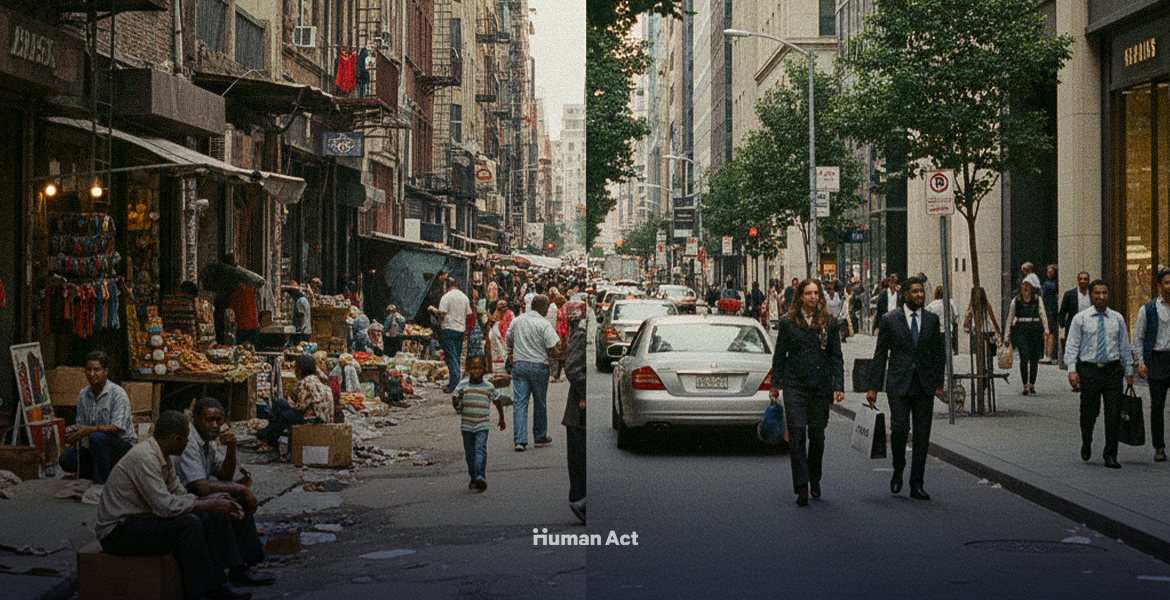


Poverty and insecurity form a vicious cycle. Poverty fuels crime, and insecurity worsens hardship.
Understanding how low income and inequality erode safety and social cohesion is crucial to breaking the cycle. This article explores the many links between poverty and insecurity, showing why poverty reduction must be central to any public safety policy.
Numerous studies demonstrate a clear, quantifiable relationship between poverty and crime. According to World Bank research, every 1 percent rise in poverty correlates with a 0.7 percent increase in crime rates, underscoring how economic hardship can push individuals toward unlawful activities. Similarly, in South Africa, a 10 percent uptick in unemployment (often a sign of poverty) is associated with a 1.6 percent rise in crime.
Poor educational attainment only aggravates the problem. High school dropouts are far more likely to engage in criminal behavior and when housing conditions are not standard, crime rates spike.
Poverty does not just undermine bank balances, it hurts health. The World Health Organization reports that individuals in the lowest income quantile are twice as likely to suffer poor health outcomes compared to those in the highest quantile.
This decline in physical well-being contributes directly to insecurity, both by limiting people’s ability to work and by exacerbating mental health issues that can lead to criminal behavior.
Economic inequality often accompanies poverty, magnifying social tensions. The OECD has observed that countries with the widest income gaps also endure the highest levels of unrest.
Within communities, stark disparities breed resentment and social exclusion. The EU’s Eurofound reports that excluded groups feel less secure and suffer lower life satisfaction. These feelings of marginalization can manifest in increased violence, from domestic abuse to gang activity.
Children are among the most vulnerable victims of poverty-driven insecurity. UNICEF data shows that youngsters growing up in poverty face higher risks of violence, exploitation, and maltreatment.
Financial stress in the home also elevates the likelihood of domestic violence. Research in the Journal of Family Violence links economic hardship directly to higher rates of spousal and child abuse.
Impoverished neighborhoods often lack robust public services, and homeless individuals are disproportionately targeted for violence. Moreover, limited access to legal assistance leaves low-income residents unable to protect themselves or seek justice effectively.
Beyond objective measures of crime, poverty shapes how safe people feel. Residents of low-income neighborhoods report a markedly reduced sense of safety compared to those in wealthier areas, even when actual crime rates are similar.
This perception itself can deter investment, degrade community cohesion, and perpetuate a self-fulfilling cycle of decline.
Reducing poverty is not only about economic fairness; it is vital for improving public safety. Effective policies that increase household incomes, provide access to quality education and healthcare, ensure decent housing, and address service gaps in underserved communities work together to reduce crime and insecurity.
Additionally, reducing income inequality and promoting social inclusion help ease the frustration and desperation that often lead to violence. Ultimately, fighting poverty must be central to any strategy for creating safer, more resilient communities.
Meeting basic needs lifts people out of hardship and builds a foundation for lasting peace and stability.
World Bank Report / World Health Organization / The OECD / Eurofound / UNICEF / Journal of Family Violence